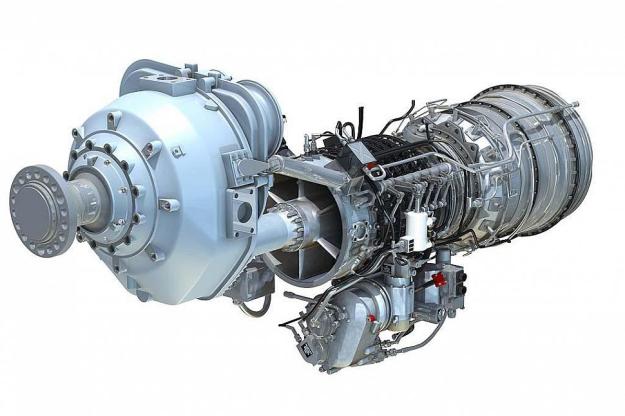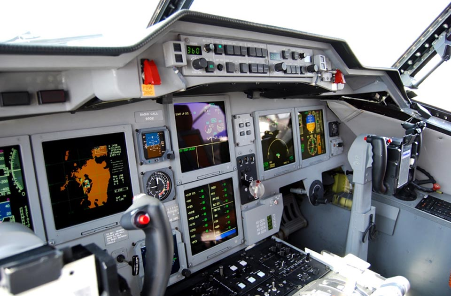The ShinMaywa US-2 is an amphibious short take-off and landing (STOL) aircraft manufactured by Japan-based ShinMaywa Industries. Designed for air-sea rescue missions, the US-2 is operated by the 31st Fleet Air Wing of the Japan Maritime Self-Defence Force (JMSDF).
The ShinMaywa US-2 fleet is deployed across the remote islands of Japan’s Exclusive Economic Zones to provide surveillance and emergency medical transportation services. The aircraft can quickly reach remote islands and sites of maritime accidents during search and rescue (SAR) operations.
The US-2 amphibian aircraft was displayed at Defexpo India 2012. The aircraft has been offered to India in response to the Indian Navy’s global request for information (RFI) for nine amphibious SAR aircraft. The US-2 is the first Japanese aircraft to be offered to the Indian defence market.

Orders and deliveries
The ShinMaywa US-2 is an amphibious short take-off and landing (STOL) aircraft manufactured by Japan-based ShinMaywa Industries.
The first US-2 commercial production aircraft was delivered to Japan’s Ministry of Defence (MoD) in February 2009. The fifth US-2 was delivered to the Japan Maritime Self-Defence Force in 2011.
Operators: Here
Design of ShinMaywa US-2 amphibious aircraft
A significant characteristic of the US-2 is the boundary layer control system that provides the aircraft with excellent STOL capabilities. You can see the general layout in the very cartoonish diagram above (I can’t imagine a non-Japanese company to have graphics as cool as these!). There is a dedicated turbine (a converted LHTEC T800 helicopter turboshaft) that provides flow through a system of pipes and ducts. The momentum that is introduced in the blown flaps and high-lift surfaces keeps the boundary layer attached and diverts the flow downwards thus providing lift in speeds where normally the wing should stall. Source: Robot Pig
The US-2 incorporates a flexible airframe design allowing it to be converted into a fire-fighting amphibian, passenger transport aircraft, or a multi-purpose amphibian. The wings and fuselage are made of composite materials. It features a pressurised cabin for high-altitude flights. The STOL technology based on boundary layer control (BLC) helps in very-low-speed operations.

The US-2 has a length of 33.3m, wing span of 33.2m, and a height of 9.8m. The empty weight of the aircraft is 25,630kg. The aircraft can carry up to 20 passengers or 12 stretchers.

Technological features / equipment
In addition to better cruising performance, the US-2 features numerous improvements over its predecessor US-1 for safe operations even during inclement weather.

1. Electronic integrated instrument panel
Digitalized meters are integrated into one LCD panel
2. Pressurized cabin
For high-altitude flights above low-pressure areas to ease stress on patients
3. “Fly-by-wire (FBW)” control system
Computer-controlled flight system enhances safety and flight controllability
4. High-powered engines / propellers using the latest designs
5. Outstanding seaworthiness
6. Takeoff / landing on water at extremely low speeds
Outstanding Seaworthiness
ShinMaywa’s original spray suppressor and spray strip realize excellent seaworthiness, thereby preventing damage to airframes when landing on water. Together with its capability to cruise at extremely low speeds, the US-2 can take off and land on water with waves up to three meters high. Source: ShinMaywa Industries, Ltd., Japan

① Spray suppressor

② Spray strip


Fire Fighting
With modifications, the US-2 can carry 15 t of firefighting water and fire extinguishers, which is equivalent to the amount that about 21 ordinary firefighting helicopters can carry. The STOL aircraft can drop water with pinpoint accuracy on the area where a fire has spread.
By taxiing on the surface of the water (ocean, etc.) for approx. 20 seconds, the 15 tons water tank can be filled up. In case of a major fire, the US-2 can scoop up water to repeatedly extinguish fires. Source: ShinMaywa Industries, Ltd., Japan
Other Information
Cockpit of the ShinMaywa US-2
The US-2 is equipped with a glass cockpit with integrated instrument panel. A single LCD panel integrates the digitalised meters. The aircraft incorporates fly-by-wire flight control system. The computerised flight system improves the safety and controllability of the aircraft.
Engines and landing gear
The ShinMaywa US-2 is powered by four Rolls-Royce AE 2100J turboprop engines driving six Dowty R414 bladed propellers. Each engine generates a maximum power of 3,424kW. The BLC engine provides a power output of 1,015kW.
The aircraft is equipped with a tricycle type landing gear. The STOL capabilities enable the US-2 to take off and land within very short distances on land and water. The maximum take-off distance required on land is 490m. The spray suppressor and spray strip aboard the US-2 allow the operation in rough seas with wave height of 3m.
4 x Rolls-Royce AE 2100 turboprops

Manufacturer: Rolls-Royce plc
Power:
AE 2100 A/P: 4,152 shp (3,096 kW)
AE 2100D2 and AE 2100D3: 4,637 shp (3,458 kW)
AE 2100J: 4,591 shp (3,423 kW)
Overall Pressure Ratio at Maximum Power: 16.6
Compressor: Two-spool, axial flow
Compressor Stages: 14 HP
Turbine: 2 HP + 2 PT
Engine Control: Dual FADEC
Combustor Type: Annular
Length: AE 2100D2 and AE 2100P: 118 in (2.99 m);
AE 2100D3: 124 in (3.15 m); AE 2100J: 114 in (2.89 m)
Diameter: 28.7 in (72.9 cm)
Dry Weight: AE 2100D2: 1,727 lbs (783 kg); AE 2100D3: 1,925 lbs (873 kg);
AE 2100J: 1,640 lbs (744 kg); AE 2100P: 1,610 lbs (730 kg)
Platforms:
AE 2100A: Saab 2000 (commercial)
AE 2100 D2/D2A: C-27J Spartan
AE 2100D3: C-130J Hercules; LM-100J
AE 2100J: ShinMaywa US-2
AE 2100P: Saab 2000 ERIEYE AEW&C
Source fi-powerweb.com
 keroza emon YouTube
keroza emon YouTube
Performance
The US-2 aircraft can fly at a maximum altitude of over 6,000m. It has the cruising speed of 480km/h and maximum speed of 560km/h. The maximum range of the aircraft is over 4,500km. The maximum take-off weights of the aircraft on land and water are 47.7t and 43t respectively.

US-2 Specifications
| Dimensions & Performances | US-2 (ShinMaywa) |
|---|---|
| Length | 33.3m |
| Wing Span | 33.2m |
| Height | 9.8m |
| Engine | Rolls-Royce AE2100Jx4 |
| Propeller | Dowty R414 |
| Max Take-Off Weight/Distance | 47.7t / 490m |
| Max Landing Weight/Distance | 47.7t / 1,500m |
| Max Take-Off Weight/Distance (on water) | 43.0t / 280m |
| Max Landing Weight/Distance (on water) | 43.0t / 330m |
| Range | over 4,500 km |
| Cruise Altitude | More than 6,000m |
| Cruise Speed | More than 480km/h |
| Max Speed | More than 560km/h |
 keroza emon YouTube
keroza emon YouTube
Amphibians around the World
There are three major types of amphibians in the world: US-2 of Japan, CL-415 of Canada, Be-200 of Russia. Although they vary in size and features, a comparison of their performance will reveal the US-2’s superiority.

Major Specifications Comparison
| Dimensions & Performances | US-2 (ShinMaywa) |
CL-415 (Bombardier) |
Be-200 (Beriev) |
|---|---|---|---|
| Power Plant | Four-turboprop | Twin-turboprop | Twin-turbofan |
| Length | 33.3m | 19.8m | 31.4m |
| Wing Span | 33.2m | 28.6m | 32.8m |
| Max Take-Off Weight | 47.7t | 19.9t | 41.0t |
| Range | over 4,500km | 2,426km | 3,300km |
| Cruise Altitude | over 6,000m | 3,048m | 7,986m |
| Cruise Speed | 480km/h | 278km/h | 560km/h |
| Take-Off Distance (on water) |
280m | 808m | 1,000m |
| Landing Distance (on water) |
330m | 665m | 1,300m |
| Wave Height | up to 3m | up to 1.8m | up to 1.2m |
Beriev BE-200 Amphibious Aircraft: Details
Main material source naval-technology.com/Jane’s encyclopedia of Aviation
ShinMaywa US-1
Updated Dec 03, 2017
Follow us on FB World Military Forum















Nice overview! Good information gathered regarding firefighting!
LikeLike
Thanks appreciate your comment.
LikeLike
Pingback: India, Japan to finalise aircraft pact during Shinzo Abe’s India visit | thaimilitaryandasianregion